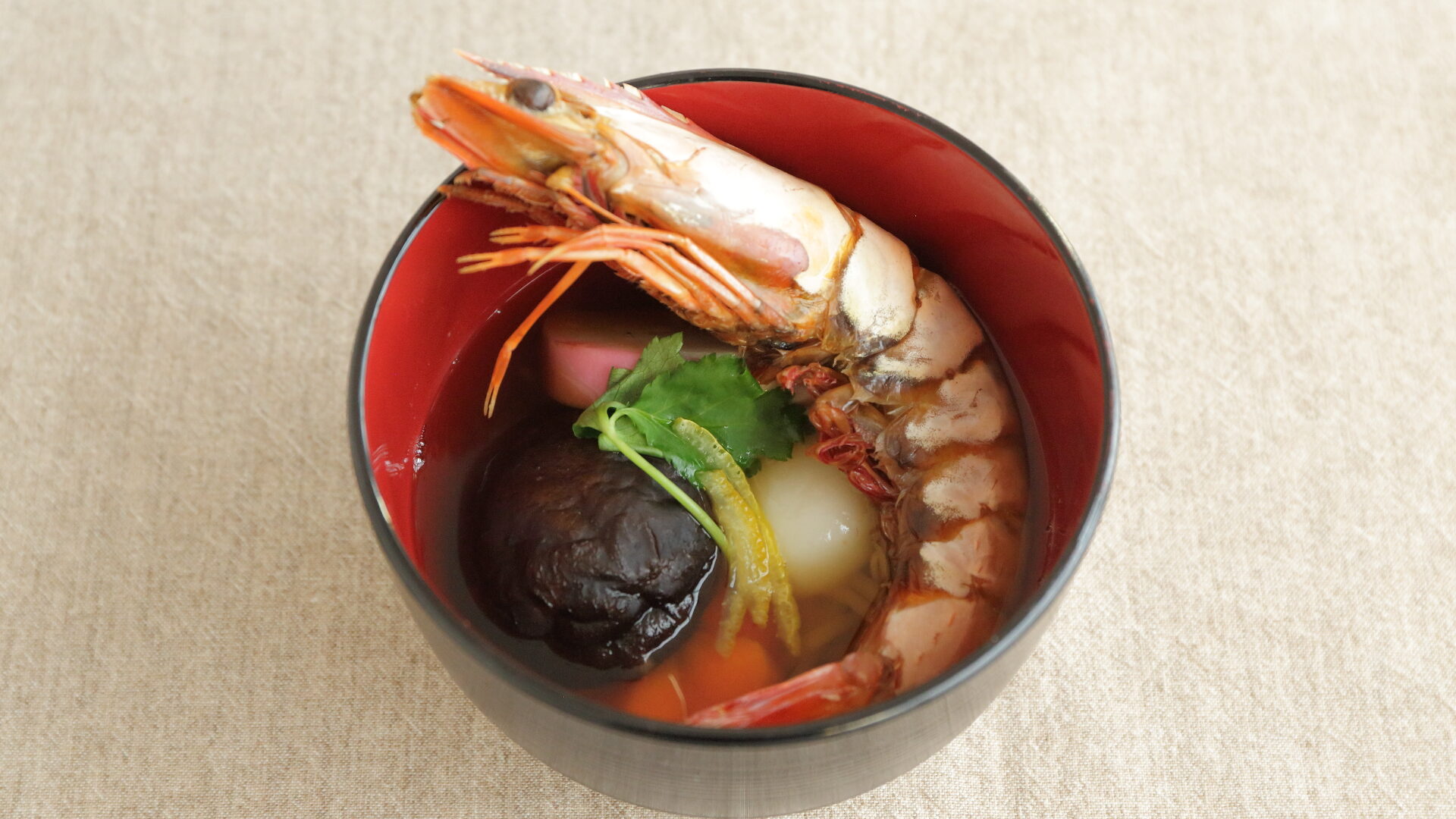
This unique Japanese New Year soup, known as “Satsuma Ebi Zoni,” hails from Kagoshima Prefecture, specifically the Satsuma Peninsula. What makes it stand out is the prominent use of shrimp, often a large grilled or dried one that makes quite an impression. The flavorful broth and carefully selected ingredients carry cultural significance, wishing for longevity and prosperity in the new year. It’s a dish steeped in local history and tradition.
Dish Name: Satsuma Ebi Zoni
- Region / Location: Kagoshima Prefecture, Japan
- Primary Area of Tradition: Satsuma Peninsula
- Main Ingredients: Grilled shrimp or dried shrimp, carrot, dried shiitake mushrooms, mochi (rice cake), bean sprouts, kamaboko (fish cake), taro root, garland chrysanthemum
How It’s Eaten / Served
To prepare Satsuma Ebi Zoni, the dried shiitake mushrooms and either grilled or dried shrimp are rehydrated in water and then brought to a boil to create a flavorful broth. Dried bonito flakes are added to enhance the dashi (soup stock). Carrots are often cut into decorative shapes and boiled separately. The cooked mochi and other ingredients are arranged in a bowl, and the hot broth is poured over them. The fragrant aroma of the shrimp adds a touch of luxury to this celebratory dish.
Cultural Background and Preservation
The tradition of eating Zoni on the first three days of the New Year became common among samurai families during the Muromachi period and later spread to the general public. In Kagoshima, while variations exist across the prefecture, the Satsuma region is particularly known for Satsuma Ebi Zoni, featuring a large shrimp that often extends beyond the rim of the bowl.
It’s believed that this custom originated with the Shimazu clan, the feudal lords of the Satsuma domain, who enjoyed “Ebi Zoni.” Kagoshima’s Izumi offshore area has long been a thriving shrimp fishing ground, where shrimp were caught using a traditional method called “keta-utasebune” and then dried over charcoal to create grilled shrimp, which were offered to the Shimazu family. Even today, the sight of grilled shrimp hanging outside dried fish shops is a common winter scene in Kagoshima.
Satsuma Ebi Zoni is typically eaten during the first three days of the New Year. The shrimp symbolizes longevity, taro root represents the prosperity of descendants, and bean sprouts are included with the wish for diligence and good health. Efforts to preserve and pass on this culinary tradition include events held at sites like Sengan-en, the former villa of the Shimazu clan, where traditional grilled shrimp Zoni is served. However, there are challenges, such as the declining production of traditional grilled shrimp in Izumi City due to a decrease in the number of fishermen.
Additional information:
- Mochi: A Japanese rice cake made of glutinous rice. It has a chewy and slightly sticky texture and is often grilled or boiled in soups.
- Dashi: A Japanese soup stock that forms the base for many dishes. It is typically made from kombu (kelp), dried bonito flakes (katsuobushi), dried sardines (niboshi), or dried shiitake mushrooms.
- Kamaboko: A type of cured surimi, a processed seafood product made from white-fleshed fish. It often has decorative shapes and is used as a garnish or ingredient in various Japanese dishes.
- Garland chrysanthemum (Shungiku): A leafy green vegetable with a slightly peppery and bitter taste, commonly used in Japanese hot pots and soups.
The information about regional cuisine featured on this website (Piggy's Grandma of Japan) is summarized and adapted from the Ministry of Agriculture, Forestry and Fisheries of Japan (MAFF) website, "Our Regional Cuisines"Additional commentary is provided based on the unique experiences and perspectives of the site's editors.
The copyright for the original content regarding regional cuisine belongs to the Ministry of Agriculture, Forestry and Fisheries of Japan.
The summaries and adaptations published on this site are intended for informational purposes only. Piggy's Grandma of Japan does not guarantee the accuracy or completeness of this information. For the most accurate and complete details, please refer to the original pages on the MAFF website.

